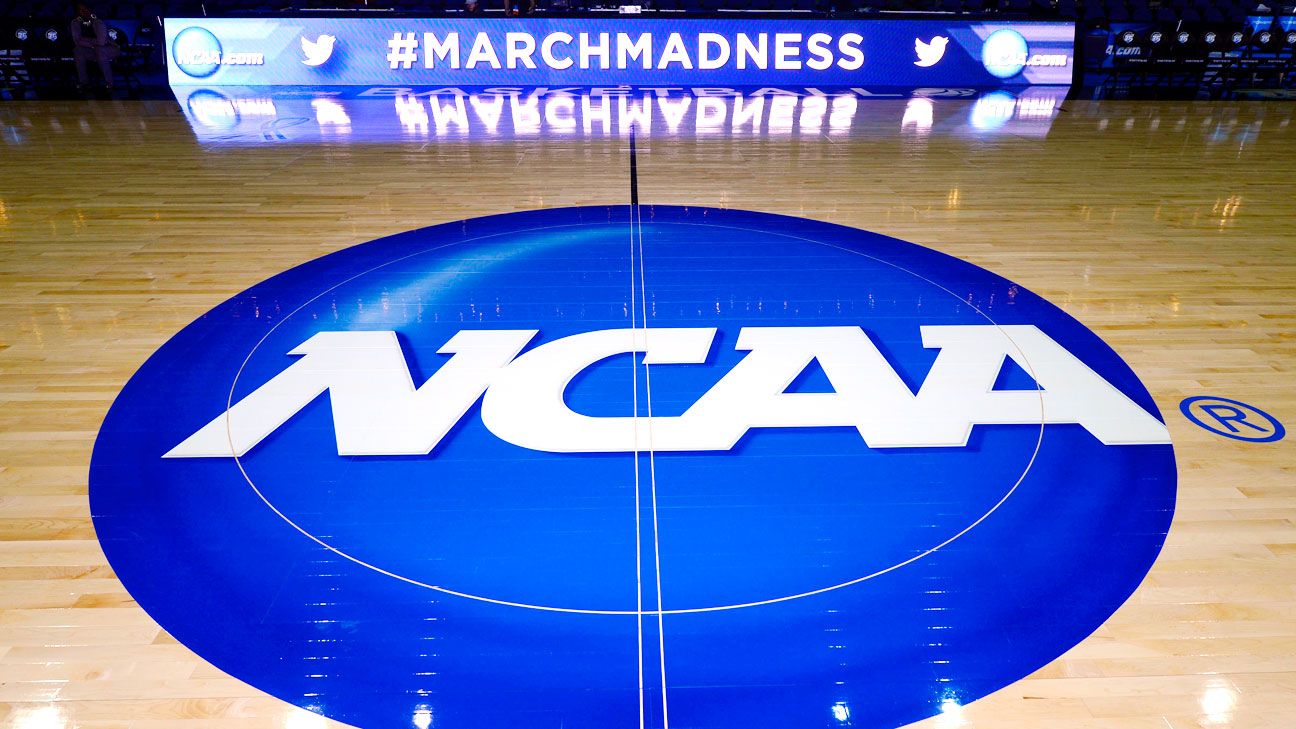All a team needs to play in this year’s NCAA Tournament is five healthy players. How about a coach? The NCAA will get back to you on that.
The fluid nature of a March Madness played amid the coronavirus pandemic was spelled out Wednesday, hours before the NCAA selection committee began meeting to hash out a 68-team bracket that could remain in flux up until the games tip off next week.
In explaining a number of contingencies that could come into play if teams are exposed to COVID-19, NCAA senior VP of basketball Dan Gavitt said that as long as a team has five healthy players, it’s good to go. And if that team’s coaching staff gets decimated by the coronavirus?
“Honestly, it’s probably something we should talk about as a committee,” he said.
For months, the NCAA has been laying out protocols to ensure the tournament will go off in somewhat normal-looking fashion. The biggest change is that all 68 teams will descend on Indianapolis next week, and all games over 19 days will be played in and around the city.
Players will have their own rooms and teams will have their own floors at designated hotels throughout their stay in Indiana. Players and coaches will be subject to frequent virus testing and contact tracing. To augment that effort, when they’re at practice and in games, players will wear devices that track their location and can keep track of people they’ve been in close proximity with _ helpful if one of those close contacts tests positive.
Two weeks ago, the NCAA released its policy about how and when teams that make the tournament might be replaced if they’re struck by the virus. The bracket comes out during the usual reveal, on Sunday evening. After 6 p.m. Tuesday, teams that make the field cannot be replaced if they get sick, and their scheduled opponents would simply move on in the bracket.
But Gavitt acknowledged that as long as a team has five players, it can stick around for as long as it keeps winning.
“We decided if they had five players eligible and healthy,” they could play, he said. “We wrestled with contingencies, and thought it was fairest for a team that earned its way, that even if it was compromised, they should have the opportunity to play rather than be replaced.”
The task of constructing the bracket also has been greatly altered by the pandemic. Committee chairman Mitch Barnhart, the athletic director at Kentucky, said he was encouraged by the fact that all but six of the top 100 ranked teams had played at least 20 games this season. But he also acknowledged that very few teams’ seasons have been “normal.”
Just one example: Michigan heads into the Big Ten Tournament as the regular-season champion despite having fewer wins than an Illinois team that played more games. Michigan didn’t play over a 22-day stretch in January and February.
“We’re looking at player availability,” Barnhart said. “We’re looking at who’s played games and missed games. We put another component on our monitoring sheet to take into account this unique circumstance.”
Even with all the uncertainty, undefeated Gonzaga all but assured itself of the overall top seed with its come-from-behind victory over BYU in the West Coast Conference final Tuesday night.
Michigan, Baylor and Illinois appear to have the inside track on the other No. 1 seeds, while Duke and Kentucky head a longer-than-usual list of blueblood programs that struggled this season and need to win their conference tournaments this week to make March Madness.
